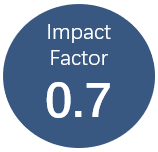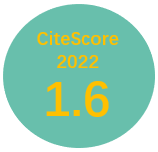Making public works work: A framework for initiating right public infrastructure investments
Vol 6, Issue 2, 2022
VIEWS - 419 (Abstract) 271 (PDF)
Abstract
Public works (PWs) in Jordan seek to deliver public services that contribute to socio-economic growth and service provision. A clear framework for initiating PWs investments is lacking in Jordan to meet the required level of development of the country. This work sought to develop a framework for delivering the right PWs investments. The study found that there are several steps that need to be followed to deliver a desired project’s objectives. The study employed a qualitative method using semi-structured interviews. Besides the interviews, the document analysis approach was used and an extensive literature review was conducted. Experts in Jordan regarding PWs development were selected to participate in this study of developing a framework for the initiation of PWs investments. The study found that the framework should involve different steps and measures. They are integrated together to create a framework reflecting international practices in the context of Jordan.
Keywords
Full Text:
PDFReferences
Al-Balqa Governorate (2016). The Local Development Plan for Amman and Balqa Governorates 2016–2019. Al-Balqa Governorate.
Alkhetan F (2017). “The government to governorate”. Alrai.
Al-Rashdan D, Al-Kloub B, Dean A and Al-Shemmeri T (1999). “Environmental impact assessment and ranking the environmental projects in Jordan”. European Journal of Operational Research, 118(1): 30–45. https://doi.org/10.1016/S0377-2217(97)00079-9
Bartlett D and Payne S (1997). “Grounded theory—Its basis, rationale and procedures”. In: McKenzie G, Powell J and Usher R (Eds.), Understanding Social Research: Perspectives on Methodology and Practice, pp. 167–189. The Falmer Press.
Baum WC and Tolbert SM (1985). Investing in Development: Lessons of the World Bank Experience. Oxford University Press.
Bhattacharya A, Meltzer JP, Oppenheim J, et al. (2016, December 23). Delivering on Sustainable Infrastructure for Better Development and Better Climate. Brookings Institution.
Boddy CR (2016). “Sample size for qualitative research”. Qualitative Market Research, 19(4): 426–432. https://doi.org/10.1108/QMR-06-2016-0053
British Standards Institute (2010). Project Management—Principles and Guidelines for the Management of Projects. British Standards Institute.
Consolidated Consultants (2012). Environmental & Social Impact Assessment Study for the Expansion of As-Samra Wastewater Treatment Plant—Final ESIA Report. Consolidated Consultants.
Creswell JW (2013). Research Design: Qualitative, Quantitative, and Mixed Methods Approach. SAGE Publications.
Cusworth JW and Franks TR (1993). Managing Projects in Developing Countries. Longman Group.
Daly HE (1990). “Toward some operational principles of sustainable development”. Ecological Economics, 2(1): 1–6. https://doi.org/10.1016/0921-8009(90)90010-R
Denscombe M (2014). The Good Research Guide for Small-Scale Social Research Projects. Open University Press.
Department of Statistics (2016). Jordan Statistical Yearbook 2016. Department of Statistics, Government of Jordan.
_____ (2022). Jordan Statistical Yearbook 2022. Department of Statistics, Government of Jordan.
Dworkin SL (2012). “Sample size policy for qualitative studies using in-depth interviews”. Archives of Sexual Behavior, 41(6): 1319–1320. https://doi.org/10.1007/s10508-012-0016-6
Easterby-Smith M, Thorpe R and Lowe A (2002). Management Research: An Introduction (2nd Ed.). SAGE Publications.
El-Sawalhi N and Sarhan MS (2018). “Causes of non-prioritization of infrastructure projects in the Gaza Strip”. Journal of Civil Construction and Environmental Engineering, 3(1): 29–38. http://doi.org/10.11648/j.jccee.20180301.15
“EU: Building relations with Jordan—A look back on priorities and achievement” (2014). Global Arab Network.
Fellows R and Liu A (2015). Research Methods for Construction (4th Ed.). John Wiley & Sons.
General Budget Department (2015). Strategic Plan 2015–2017. General Budget Department, Government of Jordan.
Gill J and Johnson P (2002). Research Methods for Managers (3rd Ed.). SAGE Publications.
Government of Jordan (2015). The National Vision of Jordan (Jordan Vision 2025). Government of Jordan.
Greater Amman Municipality (2017). Public Works Roles and Strategies. Greater Amman Municipality.
De Groot B, Leendertse W and Arts J (2022). “Co-evolution of organizations in infrastructure planning: The role of communities of practice as windows for collective learning across project-oriented organizations”. Administration & Society, 54(7): 1328–1356. https://doi.org/10.1177/00953997221100379
Gupta K (2007). A Practical Guide to Needs Assessment. Pfeiffer.
Hammarberg K, Kirkman M and de Lacey S (2016). “Qualitative research methods: When to use them and how to judge them”. Human Reproduction, 31(3): 498–501. https://doi.org/10.1093/humrep/dev334
Hancock B, Ockleford E and Windridge K (2009). An Introduction to Qualitative Research. NIHR Research Design Service for the East Midlands and NIHR Research Design Service for Yorkshire & the Humber.
Hart C (2018). Doing a Literature Review: Releasing the Research Imagination (2nd Ed.). SAGE Publications.
Infrastructure and Projects Authority (2017). Analysis of the National Infrastructure and Construction Pipeline. Infrastructure and Projects Authority, HM Treasury, Government of UK.
International Transport Forum (2017). Strategic Infrastructure Planning: International Best Practice. International Transport Forum, Organisation for Economic Co-operation and Development.
Jordan Chamber of Industry (2022). Construction Report of Jordan. Jordan Chamber of Industry.
Keeney S, Hasson F and McKenna HP (2001). “A critical review of the Delphi technique as a research methodology for nursing”. International Journal of Nursing Studies, 38(2): 195–200. https://doi.org/10.1016/S0020-7489(00)00044-4
Klakegg OJ (2010). Governance of Major Public Investment Projects: In Pursuit of Relevance and Sustainability [PhD thesis, Norwegian University of Science and Technology].
Marcelo D, Mandri-Perrot C, House S and Schwartz JZ (2016). An Alternative Approach to Project Selection: The Infrastructure Prioritization Framework. World Bank.
Marshall B, Cardon P, Poddar A and Fontenot R (2013). “Does sample size matter in qualitative research? A review of qualitative interviews in is research”. Journal of Computer Information Systems, 54(1): 11–22. https://doi.org/10.1080/08874417.2013.11645667
Ministry of Environment (2016). National Strategy and Action Plan for Sustainable Consumption and Production in Jordan 2016–2025. Ministry of Environment, Government of Jordan.
Ministry of Health (2005). Project Appraisal Document (PAD) for Al-Zarqa General Hospital. Ministry of Health, Government of Jordan.
_____ (2007). Project Appraisal Document (PAD) for Albasheer Hospital Project, Phase III. Ministry of Health, Government of Jordan.
Ministry of Planning and International Cooperation (2016). The Executive Development Plan 2016–2019. Ministry of Planning and International Cooperation, Government of Jordan.
_____ (2017). Jordan’s Way to Sustainable Development—First National Voluntary Review on the Implementation of the 2030 Agenda. Ministry of Planning and International Cooperation, Government of Jordan.
Ministry of Public Works and Housing (MPWH) (2004). The Regulation of Government Works No. 71 of 1986. Ministry of Public Works and Housing, Government of Jordan.
_____ (2005). Public Works Laws and System No. 71 for the Year 1986. Ministry of Public Works and Housing, Government of Jordan.
_____ (2017). Website. Ministry of Public Works and Housing, Government of Jordan.
_____ (2022). Plans and Its Roles, and Public Works Law. Ministry of Public Works and Housing, Government of Jordan.
Ministry of Transportation (2015). Strategic Plan 2015–2017. Ministry of Transportation, Government of Jordan.
Morse JM (2000). “Determining sample size”. Qualitative Health Research, 10(1): 3–5. https://doi.org/10.1177/104973200129118183
Naoum SG (1998). Dissertation Research and Writing for Construction Students (1st Ed.). Butterworth-Heinemann.
Office of Government Commerce (2007). Sustainability: Achieving Excellence in Construction Procurement Guide. Office of Government Commerce, HM Treasury, Government of UK.
Omodan BI and Abejide SO (2022). “Reconstructing Abraham Maslow’s hierarchy of needs towards inclusive infrastructure development needs assessment”. Journal of Infrastructure, Policy and Development, 6(2): Art. 1483. https://doi.org/10.24294/jipd.v6i2.1483
Palei T (2015). “Assessing the impact of infrastructure on economic growth and global competitiveness”. Procedia Economics and Finance, 23: 168–175. https://doi.org/10.1016/S2212-5671(15)00322-6
Priemus H (2008). “How to improve the early stages of decision-making on mega-projects”. In: Priemus H, Flyvbjerg B and van Wee B (Eds.), Decision-Making on Mega-Projects: Cost-benefit Analysis, Planning and Innovation, pp. 105–119. Edward Elgar Publishing. https://doi.org/10.4337/9781848440173.00013
Rădulescu MA, Leendertse W and Arts J (2020). “Conditions for co-creation in infrastructure projects: Experiences from the Overdiepse Polder Project (The Netherlands)”. Sustainability, 12(18): Art. 7736. https://doi.org/10.3390/su12187736
Ritchie J, Lewis J and Elam G (2003). “Designing and selecting samples”. In: Ritchie J and Lewis J (Eds.), Qualitative Research Practice: A Guide for Social Science Students and Researchers, pp. 77–108. SAGE Publications.
Serebrisky T, Watkins GG, Ramirez MC, et al. (2018). IDBG Framework for Planning, Preparing and Financing Sustainable Infrastructure Projects: IDB Sustainable Infrastructure Platform. Inter-American Development Bank. https://doi.org/10.18235/0001037
Shiferaw AT and Klakegg OJ (2012). “Linking policies to projects: The key to identifying the right public investment projects”. Project Management Journal, 43(4): 14–26. https://doi.org/10.1002/pmj.21279
Sourani A and Sohail M (2013). “Enabling sustainable construction in UK public procurement”. Proceedings of the Institution of Civil Engineers—Management, Procurement and Law, 166(6): 297–312. https://doi.org/10.1680/mpal.12.00022
Strauss A and Corbin J (1998). Basics of Qualitative Research (2nd Ed.). SAGE Publications.
Sweis, G, Sweis R, Abu Hammad A and Shboul A (2008). “Delays in construction projects: The case of Jordan”. International Journal of Project Management, 26(6): 665–674. https://doi.org/10.1016/j.ijproman.2007.09.009
“The MPs calls for raising the living standards of citizens” (2016). Alrai.
Thomson SB (2010). “Grounded theory—Sample size”. Journal of Administration and Governance, 5(1): 45–52.
Turley F (2009). An Introduction to PRINCE2. MgmtPlaza.
Wang N, Wei K and Sun H (2014). “Whole life project management approach to sustainability”. Journal of Management in Engineering, 30(2): 246–255. https://doi.org/10.1061/(ASCE)ME.1943-5479.0000185
Williams T and Samset K (2010). “Issues in front-end decision making on projects”. Project Management Journal, 41(2): 38–42. https://doi.org/10.1002/pmj.20160
World Bank (1994). World Development Report 1994: Infrastructure for Development. Oxford University Press.
_____ (2016). Hashemite Kingdom of Jordan Promoting Poverty Reduction and Shared Prosperity: Systematic Country Diagnostic. World Bank. https://doi.org/10.1596/23956
Yin RK (2013). Case Study Research: Design and Methods (3rd Ed.). SAGE Publications.
Zhang X, Wu Y, Shen L and Skitmore M (2014). “A prototype system dynamic model for assessing the sustainability of construction projects”. International Journal of Project Management, 32(1): 66–76. https://doi.org/10.1016/j.ijproman.2013.01.009
DOI: https://doi.org/10.24294/jipd.v6i2.1692
Refbacks
- There are currently no refbacks.
Copyright (c) 2022 Moawiah A. Alnsour

This work is licensed under a Creative Commons Attribution-NonCommercial 4.0 International License.

This site is licensed under a Creative Commons Attribution 4.0 International License.










